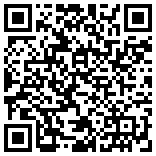There are so many Forex trading strategies out there that it’s not surprising so many people don’t know where to start. But actually, all of those strategies are some combination of two different techniques: fundamental or technical analysis.
A fundamental analyst looks at a nation’s entire financial picture to guide her trades, studying international macroeconomics and the forces that drive the supply of and demand for a currency. There are five of these factors:
• is that country’s government in good financial shape or in the red, and what is their financial policy (pro-business, labor, etc.)
• the balance of imports versus exports, which directly affects a nation’s money supply
• the growth of that country’s real gross domestic product (GDP); in other words, that nation’s purchasing power
• interest rate levels
• inflation level; in other words, how high are prices
These last three are all relative, which means they are compared to those same measurements for other countries to determine their strength or weakness, rather than considered as stand-alone numbers.
Ang pangunahing analyst tumingin sa lahat ng mga kadahilanan at balanse ang mga ito laban sa bawat isa upang matukoy kung ang pera ng isang bansa ay pinahahalagahan o depreciate. Siyempre pa, bilang ng Forex merkado na mga may kwalipikasyon sa pera ng isang bansa laban sa mga ng isa pang, ang pangunahing Manunuri ay hindi lamang pag-aralan ang Economic larawan ng isang bansa; kailangan niyang pag-aralan ang dalawang ito, at pagkatapos ay Ihambing sa kanila upang malaman kung aling mga pintura ng isang mas nakahihikayat na pinansiyal na larawan.
The technical analyst, sa kabilang banda, looks only at the charts. He looks at the price of a currency pair (or any other commodity, such as oil prices or stocks) and sees how it has varied through time, examining the patterns it has drawn with an eye to predicting what it might do in the future.
Technical analysis is flexible. It works the same way in any market with charts (Forex, stocks, Commodities, etc.). Once you learn how it’s done, you can apply it in other markets and get the same results.
Fundamental analysis, sa kabilang banda, is not flexible, because it looks at the economic data for each nation individually. The financial numbers for Great Britain, Matapos ang lahat, have nothing to do with those for Japan or New Zealand, and the fundamental analyst cannot take her studies to another market. She must study one currency pair and learn its two nations’ economies intimately if she is to be successful with this technique.
That said, fundamental analysis is good for understanding what ought to happen and for predicting the long-range trend of a currency pair. It’s also true that many profitable trades are made immediately after economic announcements, when savvy traders jump into the market while everyone else is still gasping over the numbers.
Sa kabilang banda, technical analysis can give you a specific strategy for a trade, including entry and exit points and where to place your stops. It requires less time to learn than fundamental analysis, and works well for shorter trends and individual trades.
The most successful traders use a combination of these two techniques, combining chart analysis with the timing provided by economic announcements to get the best of both worlds.































































































 Mga komento RSS Feed
Mga komento RSS Feed